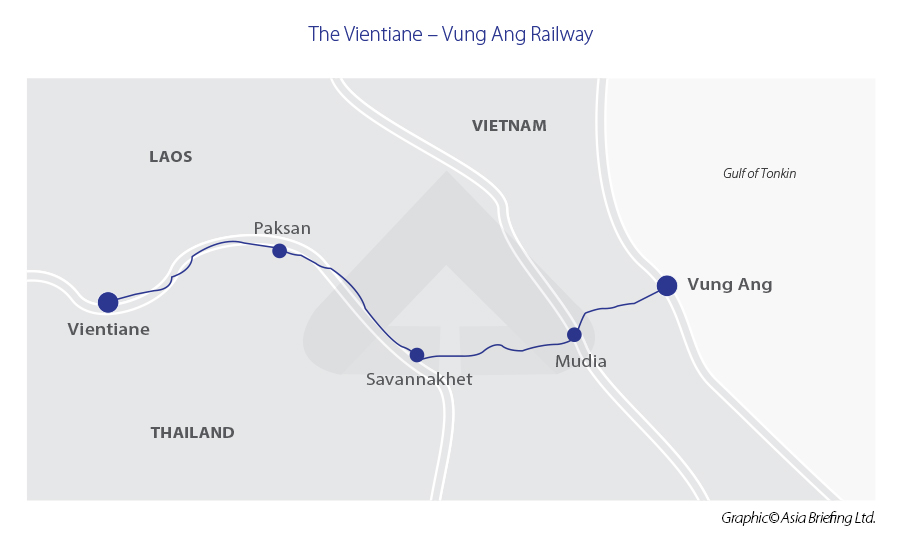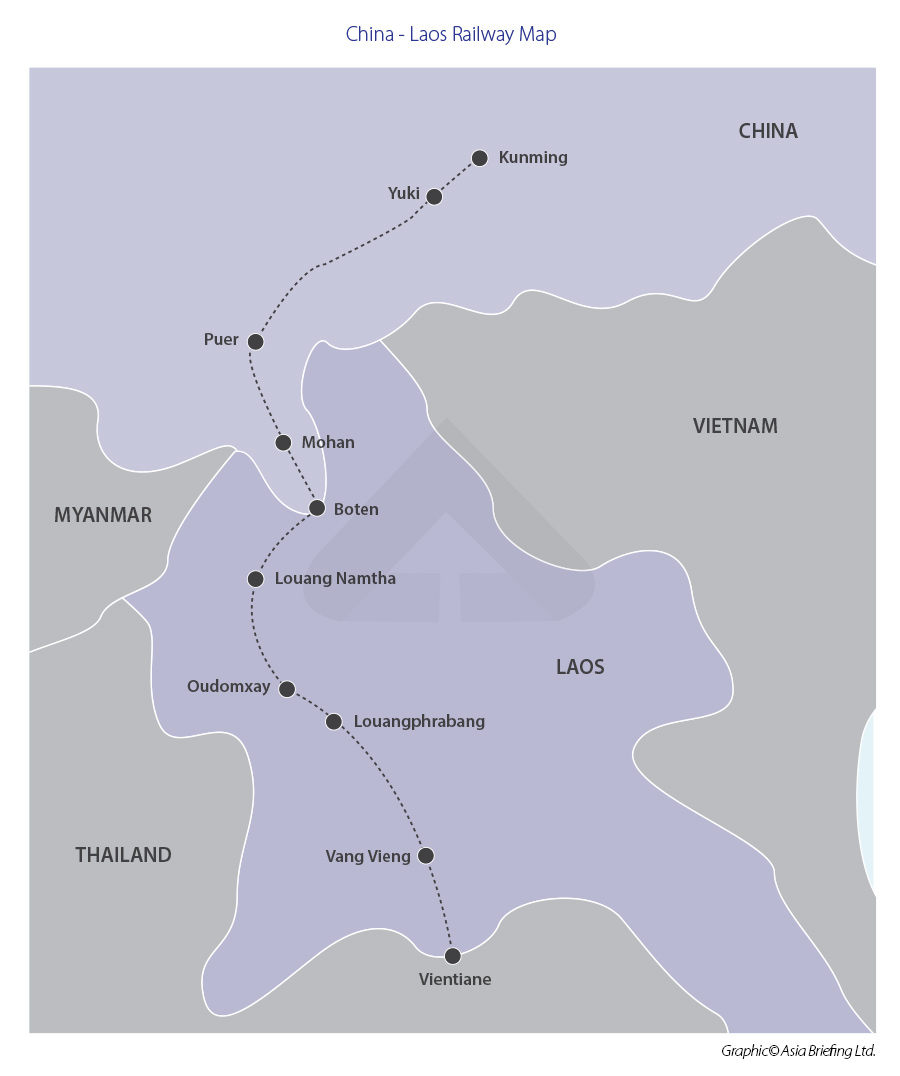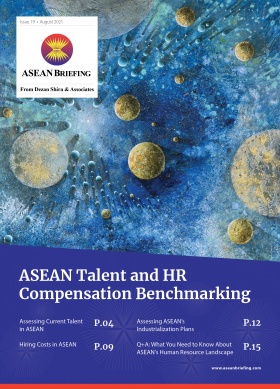The Laos-Vietnam Railway, Boosting Laos’ Ambitions to Become a Logistics Hub
The Laos-Vietnam railway is a proposed railway project aimed to further boost Laos’ ambitions to become a regional logistics hub. The rail route will connect the capital Vientiane to the port city of Vung Ang in Vietnam. The port will give Laos crucial access to the South China Sea and the large markets of South Korea and Japan, among others. Laos recently inaugurated the Laos-China high-speed railway, in 2021, the first of its kind in Southeast Asia.
The Laos-Vietnam railway is a proposed railway route that would connect the capital of Laos Vientiane to the port city of Vung Ang in Vietnam. The 555km track, estimated to cost US$5 billion, will further transform Laos into a land-linked country that can facilitate more trade between its provinces, and ASEAN neighbors, and turn Laos into a logistics hub. Construction is expected to start in November 2022 with no completion date yet announced.
Crucially, the line connects Vientiane to Vung Ang’s deep seaport, which is the closest feasible seaport to Vientiane. The line would connect with the Laos-China railway, meaning the catchment area for freight shipment would extend to Northern Laos and South China. Further, the railway will interchange with Vietnam’s North-South railway, which opens the prospect of a Hanoi-Vientiane route.
Laos inaugurated the Laos-China high-speed railway in November 2021, the first of its kind in Southeast Asia. The railway connects Vientiane to Boten, on the Laos-China border. At Boten, the line heads north to the Chinese city of Kunming, the capital of China’s Yunnan province. Before the 414km Boten-Vientiane railway, infrastructure-poor Laos had only four kilometers of railway.
Crucial access to the South China Sea
Vietnam’s Vung Ang deep-sea port plays a vital role in boosting Laotian economic activity through maritime trade and transportation exchanges The Laos government owns a 60 percent share in the port, which provides Laos access to the South China Sea, Central Vietnam, Northeast Thailand, and to larger Asian markets, such as South Korea, China, and Japan. The Vietnamese government has authorized a 50-year concession to Laos.
Currently, the port can accommodate cargo ships of up to 50,000 deadweight tonnage and container ships of up to 2,000 twenty-foot equivalents (TEU). By 2030, the port is expected to handle over 20 million tons of dry bulk cargo.Supporting infrastructure in place
In addition to the Laos-China railway and the Laos-Vietnam railway, Laos began the development of the Thanaleng Dry Port (TDP) and Vientiane Logistics Park (VLP) — two mega infrastructure projects under the Lao Logistics Link (LLL) program. The LLL is a government initiative to transform into a logistics hub in ASEAN.
Built over 300 acres of land, the TDP and VLP are expected to be completed in the third quarter of 2022, providing an array of freight and cross-border transport services that will also be linked to the Laos-China railway, and the Laos-Vietnam railway. Located near the 1st Lao-Thai Mekong Friendship Bridge, the TDP and VLP are expected to reduce transport costs by up to 40 percent from current prices by 2025, and ultimately become an alternative route for ASEAN exporters to the European markets.Shipments from Southeast Asia to Europe could take just over 10 days by rail. Currently, ASEAN exporters utilize Singapore’s huge seaport as the main transport hub, which takes approximately 45 days to reach Europe.
Other facilities set to be developed in the VLP include commercial stations, an export processing zone, a free trade zone, and a tank farm, which will act as a fuel distribution center for Laos.
Following these plans for the logistics park and growing rail network, the State Railway of Thailand (SRT) has plans to increase the number of its freight train services from Laos to Thailand to 24 by 2026. Currently, it operates two round trips per day. Further, the SRT plans to develop a 430,000-sq.-meter logistics center, which will be linked to the Laem Chabang Port.
The plan calls for the freight to be transported over the Mekong into Laos and then onto the Laos-China railway.
Laos as a logistics hub in ASEAN
As a country with only hydropower as its main industry, Laos’ rail networks can help transform this landlocked country into a regional logistics hub.
The rail networks can reduce transportation costs by up to 40 percent and are fast becoming the choice of transport for many exporters due to rising crude oil prices. According to a World Bank report, transit trade through Laos could shift an estimated 3.9 million tons by 2030, up from 1.6 million tons recorded in 2016.
With the higher costs of road, air, and sea cargo shipping, rail transport presents opportunities to enhance Laotian trade with not only China and ASEAN, but potentially with Europe.
Vietnam already launched its first freight train service to Europe in 2021, with the first container leaving Hanoi in July 2021 and arriving in Liege, Belgium, one month later. The route transits through China where it interchanges on the China-Europe express route, before traveling to Kazakhstan, Russia, and Belarus.
China this year launched new freight train services to Vietnam to establish new trade opportunities with cities in its Western regions. The routes connect the west China cities of Chongqing (Guoyuan Port) and Chengdu to Vietnam’s capital Hanoi.
Laos can stand to benefit from the increased regional connectivity, but its government will need to continue building the necessary supporting infrastructure and offer incentives to seek foreign capital and alongside it, training for the local workforce. These will require consistent reforms, strategic project plans, and transparency in governance.
Further Reading
- The Completed China-Laos Railway: Bringing Opportunities for ASEAN and the Asia Pacific
- Thailand’s Laem Chabang Deep Seaport to Begin Phase 3 Expansion
- How to Claim Investment Promotion Incentives in Laos: New Guidelines in Effect
About Us
ASEAN Briefing is produced by Dezan Shira & Associates. The firm assists foreign investors throughout Asia and maintains offices throughout ASEAN, including in Singapore, Hanoi, Ho Chi Minh City, and Da Nang in Vietnam, Munich, and Essen in Germany, Boston, and Salt Lake City in the United States, Milan, Conegliano, and Udine in Italy, in addition to Jakarta, and Batam in Indonesia. We also have partner firms in Malaysia, Bangladesh, the Philippines, and Thailand as well as our practices in China and India. Please contact us at asia@dezshira.com or visit our website at www.dezshira.com.
- Previous Article RCEP e i vantaggi a lungo termine per Singapore
- Next Article How to Get a Cybersecurity License in Singapore









